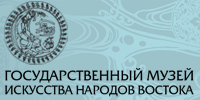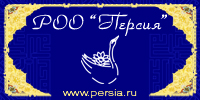
As usual, an "Impression" section opens this issue, featuring Yulia Nenasheva's picture story about India.
Writings
Vasiliy Galenko. Russian Navy Officers: Cartographers and Chroniclers.
This is an introduction to the subsequent series of three articles. They tell us about observations and impressions of Russian Navy officers, which later became both official reports and private memoirs.
Dmitriy Frumin. For My Compatriots' Information...
The article, which is based on materials from Russian archives, is focused on personality and works of Navy officer Matvey Kokovtsov, who is regarded as the first known Russian traveler in North Africa. Fragments of unique maps drawn by Kokovtsov, and excerpt from his travelogue, which is kept in the Rare Book Department of the Russian State Library, accompany the article.
Pavel Kupriyanov. "Violent Barbarians" of Noble Nature.
The author, who has studied the memoirs of Russian Navy officers, traces how the image of the Turks changed in time: those who were at first regarded as primeval enemies, gradually became to be seen as just other people. The diary of Lieutenant Aleksey Sofonov (kept in the Manuscript Department of the Russian State Library), which tells about his life in Turkish captivity, is a frank personal document of that time.
Marina Malevinskaya. Varyag in Persian Gulf.
The author presents an archival document, a report by the Captain of the Varyag cruiser about its visits to various ports in Persian Gulf. This report by Captain Vladimir Baer contains not only official information, but also descriptions of nature and people, as well as historical information.
Ivan Levochkin. Arabic Version of the Tale of Varlaam and Joasaph.
The Manuscript Department of the Russian State Library keeps a unique version of the Tale of Varlaam and Joasaph, illuminated with beautiful miniatures. The origin of this manuscript written in Arabic is still unclear. This tale, which includes a multitude of didactic stories and parables, exists in various cultures: we know about its Greek, Latin, Christian Arabic, Russian, Georgian, Persian, and other versions. We publish also a fragment of an article by Ignatiy Krachkovskiy, a prominent Russian specialist in Arabic studies and the member of Russian Academy of Sciences, which describes numerous transformations of this ancient Indian legend.
Oleg Torchinskiy. Prince Siddhartha in the Assumption Cathedral.
Continuing the subject of the previous article, the author describes an icon from the Assumption Cathedral of the Moscow Kremlin. This icon portrays Indian Prince Joasaph.
The Land of Orient
Aleksandr Dubyanskiy. To Drag That Sacred Wain...
The author describes the appearance of temple chariot - one of the Hindu rituals, which in the past attracted Europeans with its mystery and cruelty.
Elena Stroganova. The Place Where Idan Ibrahim's Spear Fell.
A small village in Mali shows us that Islam is capable of adapting and absorbing local beliefs and rites.
Svetlana Ryzhakova. Fire Worshippers.
The Parsis are a relatively small ethno-confessional community in India, who practice Zoroastrianism. Though they have integrated into Indian society, the Parsis still preserve their religious and national identity.
Lyubov Abaeva. Eezh Hada, Mother Rock of Mongolia.
During her expedition, the author learned about a popular tradition of worshipping a personified stone object. The Mongols call this monolith "Mother Rock", as its shape resembles a human figure.
Aleksandr Kadyrbaev. A Moslem Woman Who Ruled India.
In the 13th century, various clans of Kipchaks, the ruling elite in the Sultanate of Delhi, have been struggling for power. As a result, Raziyah, daughter of Sultan Iltutmish, rose to the throne. The article tells about her fate.
Aleksey Krol. A Monastery in Fayum Oasis.
The article describes ongoing excavations in Fayum Oasis, which is located in Western Lybian Desert, Egypt. Russian archaeologists and anthropologists participate in the studies of Deir El-Banat site.
Andrey Khrenkov. General Kornilov's Early Years in Turkestan.
General Lavr Kornilov, one of the famous leaders of White movement, used to serve as an intelligence officer in Turkestan. His report about one bold raid is still kept in Russian military archives.
Andrey Martynyuk. A Thousand Year Old Hope...
The history of Israel's state emblem, state flag, and national anthem.
Nina Konovalova. Paper House.
The Japanese have revealed unexpected qualities of paper and used it extensively in very unusual ways, including construction. A presentation of Japanese paper collection from the holdings of the Russian State Library accompanies the article.
Rustam Mirzaev. The Kuzagars from Uzbekistan.
Modern masters of Uzbekistan continue traditions of ancient Afrosiab style and Timurid blue ceramics.
Vladimir Kubarev. Happy Season in Chuya Basin.
Archaelogists from Novosibirsk have explored barrows in Altai, which have been spared by treasure-hunters, and found rarest carved adornments of middle first millennium B.C., including golden diadems and pendants.
Vera Bashkova. Life in Full Swing.
The author, who taught Russian in Korea, presents her notes of everyday life in this country. In the end of this issue our reader will find traditional "Orientnet" column.
Please e-mail your wishes, suggestions and comments to the following address: orientnet@rsl.ru You can find the summaries of the previous issues online, by visiting our section of the Russian State Library Web-site: http://orient.rsl.ru/en/






